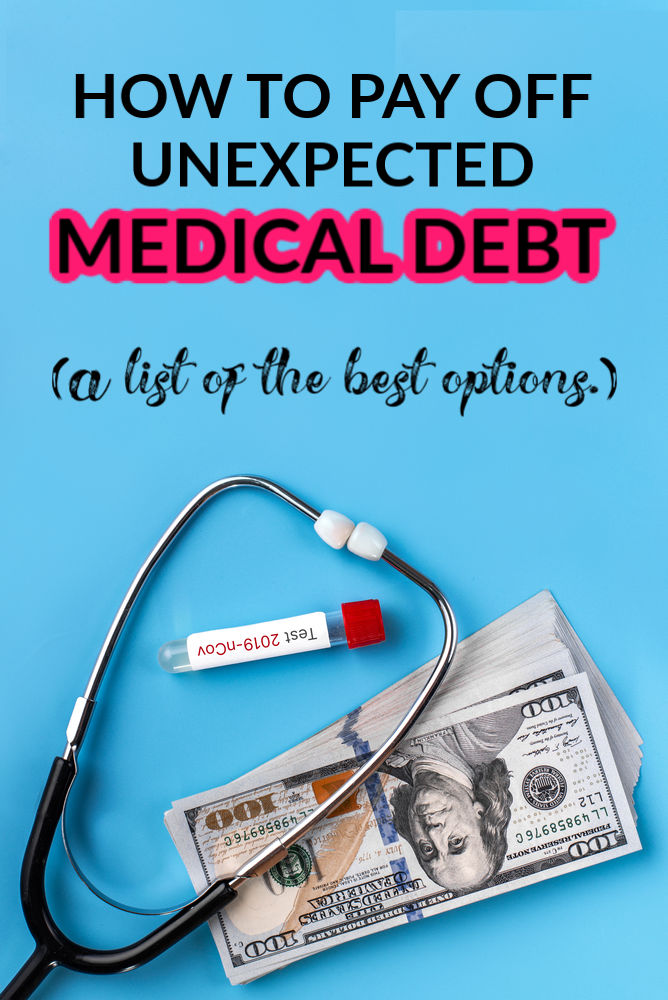
Medical debt can be one of the worst types of debt because it’s often unplanned. You can’t control when you’re going to need to take a trip to the emergency room or get sick and need to make an appointment with your doctor or get tests done.
While insurance can often help soften the blow, millions of Americans are saddled with medical debt and may not be aware that they have options. It’s important to know how to pay off unexpected medical debt and where to find help.
Here are some tips and resources to help you get control of medical debt and pay it off once and for all.
Before Seeking Help
Check for Errors
One of the first steps you should take before paying any amount back is checking for errors.
Occasionally, patients could be double-billed and have unnecessary charges on their account. You can ask for an itemized statement that can help you better understand what you were charged and help you know exactly what amount you should be negotiating.
File an Appeal
Patients have the right to file an appeal on medical bills they are receiving. Typically you will file the appeal with your insurance company. There are deadlines in place that you’ll have to keep in mind though.
The bigger insurance companies give you anywhere between 3-12 months from the date of service to file the appeal. After the appeal is received, it can take up to 60 days for the insurer to make a decision.
Getting Assistance Paying off Medical Debt
Seek Financial Assistance Options
Hospital systems and other medical professionals have programs set up to help patients pay medical bills. If you really need help, looking into financial assistance options can help relieve some stress. You’ll definitely see this offered in non-profit hospitals.
According to a staff attorney at the National Consumer Law Center:
“It’s a requirement for nonprofit hospitals to create financial assistance plans.”
The programs vary by facility and aren’t the same in every state.
If possible, you can try to find out before you have a procedure done, if that facility has a financial assistance program in place.
This option was put in place by the Affordable Cares Act and is overseen by the Internal Revenue Service. Factors like income and family size or big indicators whether you will qualify for financial assistance with these non-profit hospitals.
Getting financial assistance also depends on what procedures you get done, even if you meet the requirements to get financial help. Cosmetic surgeries and dental treatments are typically procedures that won’t get covered.
You can direct any questions about the non-profit facility’s financial assistance program to their billing department. Looking into the program is something that shouldn’t be delayed too long. Patients should start the application process within 6-8 months of receiving their first bill.
Explore Help From a Professional Medical Bill Expert
There are medical bill advocate’s out there to help patients with bills. You can pay the medical bill experts to negotiate your bill on your behalf. The goal will be to get it as low as possible and more reasonable to pay back.
Some of these experts charge at least $100 per hour. If they can save you thousands on your bills it might be well worth the money.
Others will be paid by how much money they save you. They’ll take between 25% to 35% of the savings as their payment. Some advocates do offer free consultations.
It’s always good to look at reviews and consider referrals if someone you know has used a medical bill advocate in the past.
Bill Negotiation Services
If you don’t want to deal with meeting a medical bill advocate, there are also bill negotiation services you can take advantage of. Services like Medical Cost Advocate (MCA) will negotiate a client’s medical bills for them. Patients just have to start an account with them and can then begin submitting bills right through their website.
After receiving and looking over a bill, MCA can negotiate a payment plan for any medical or dental procedure can be eligible for savings through Medical Bill Advocate.
MCA can also negotiate pricing before you even go in for treatment. So if you plan on going to a specialist or out of network provider the prospective negotiation feature can be perfect for you.
This feature can be a great way to help make the procedure fit your budget before you even get it done. Up to 80% of medical bills have errors (according to Co-Patient) and they are another negotiation service you can use to save money on your medical debt.
Prompt Payment Discount
You can also look into a prompt payment discount. This is sometimes just limited to patients who are uninsured and paying the bill themselves.
Medical providers know that the longer a bill sits unpaid, the less likely it’s going to be paid at all. Yes, the hospital wants their money, but they also keep customer service in mind as well.
Prompt Pay discounts can be anywhere between 10% to 20%. With this discount though patients are expected to pay their medical bills upfront. Don’t be too quick to pay though, and make sure your insurance has done all they can do first.
Payment Plan
One of the easiest ways to pay off your medical debt, instead of paying it upfront, is by getting on a payment plan. This is a common route for patients to go and most medical providers will allow patients to do this.
Entering a payment plan gives you extra time to pay off medical debt and avoid it going to collections. Payments are typically around the same amount and can be stretched out over a few months. You can negotiate the amount to be affordable and something you can keep up with.
How to Pay Off Unexpected Medical Debt
Medical bills can really grow into a big problem if you aren’t careful. Even in-network services can get expensive. If this happens, realize there are options to help you avoid collections and erase your debt.
Some options take longer than others to pay the debt back, but it’s always better to do what you can instead of avoiding your bills and letting them get worse.



